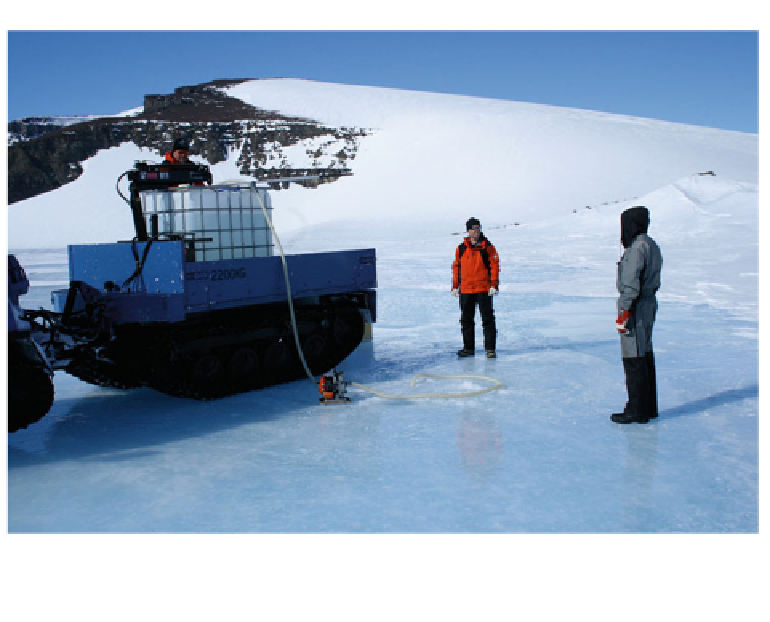Geoscience Reference
In-Depth Information
Fig. 6.3
Supraglacial lake Suvivesi at Basen nunatak is used for the household water source in the
Finnish station Aboa in the western Dronning Maud Land. Water is pumped from the lake water
body to the Finnish Sisu NA-110 bandwagon
Cryoconite holes (MacDonell and Fitzimons 2008) are the extreme lower boundary of
supraglacial liquid water bodies (Fig.
6.4
). They are small cylindrical holes in the ice
surface layer, likely formed by windblown material including mineral sediments and dry
microbial mats that absorb solar heat to melt their way down into the ice. The subsequent
growth of microbial mats can enhance this process and form a self-maintaining ecosystem
in these holes. They have been proposed as one of the refugia for the eukaryotic biota in
the controversial Snowball Earth hypothesis, when the Earth is thought to have undergone
extreme freezing-drying events between 750 and 580 million years ago.
Proglacial lakes are found at polar ice sheets and as well at mountain glaciers in lower
latitudes. All these lake types exist in Antarctica, where the continent and sub-antarctic
islands form one of the most diverse lake districts on Earth. There has been an ongoing
debate on the origin of life in the Antarctica (e.g., Gibson et al. 2006). The key question is
whether the biota are primarily postglacial, or whether they are vicariant and have sur-
vived glacial advances in lacustrine refuges. The latter model would allow for a greater
degree of endemism, and it could be possible that Antarctic lakes contain species that are
relicts of Gondwana. There is evidence of zooplankton that has survived an entire glacial
cycle, and there is also evidence that species have dispersed to the Antarctic in the present
interglacial from the sub-Antarctic islands and from other higher latitude continents of the
southern hemisphere.

Search WWH ::

Custom Search